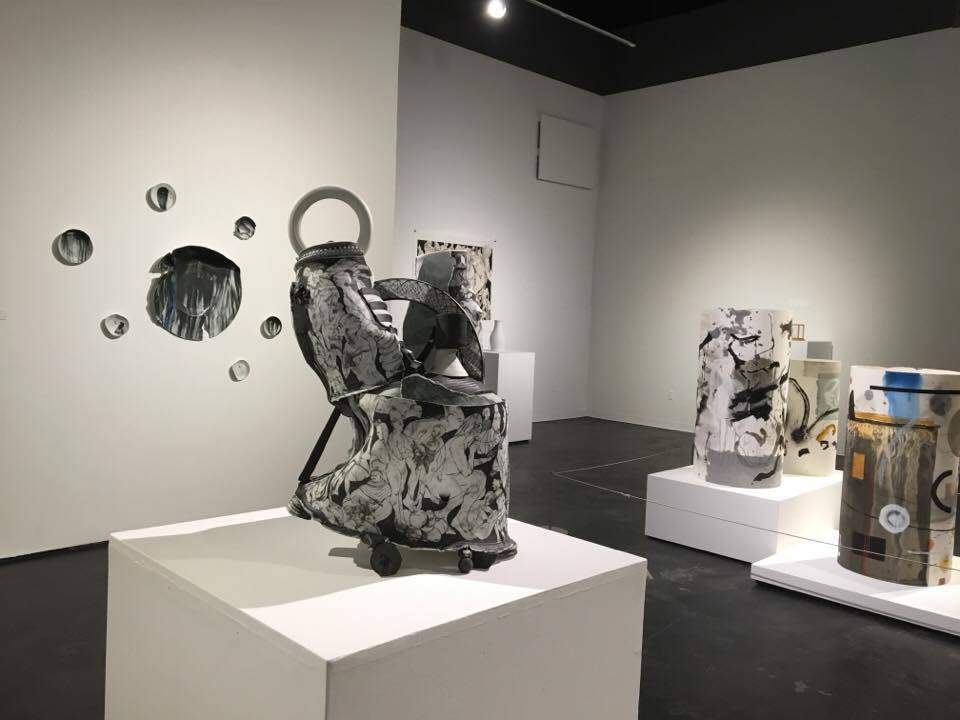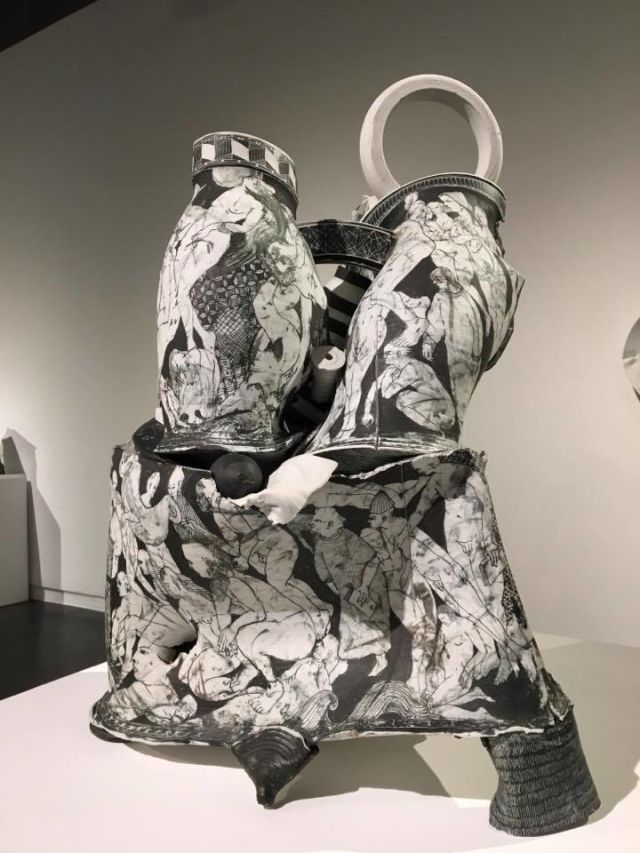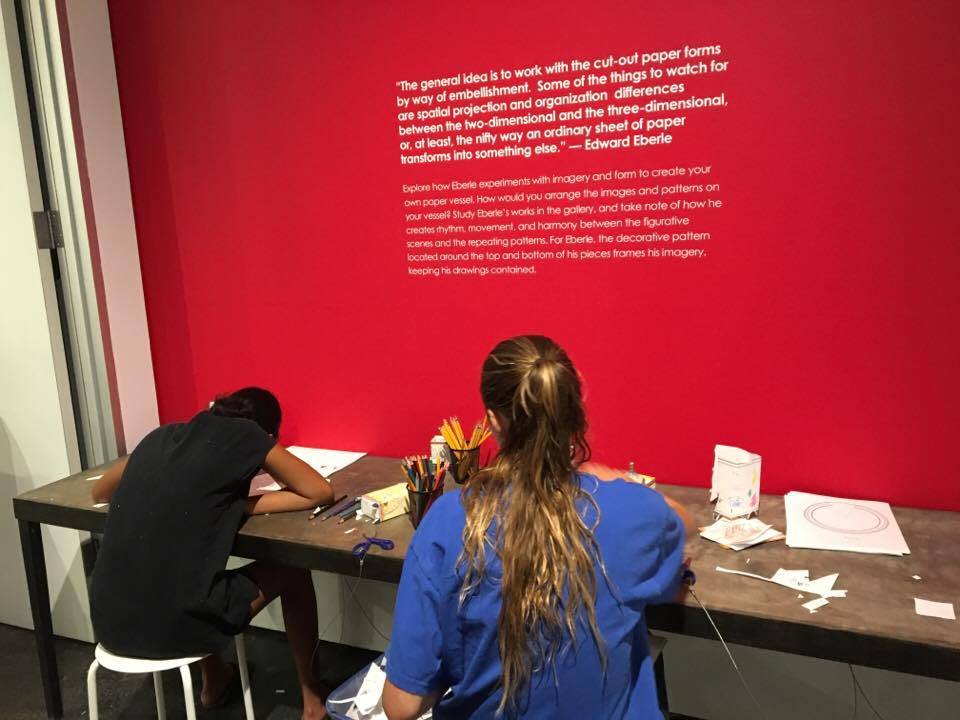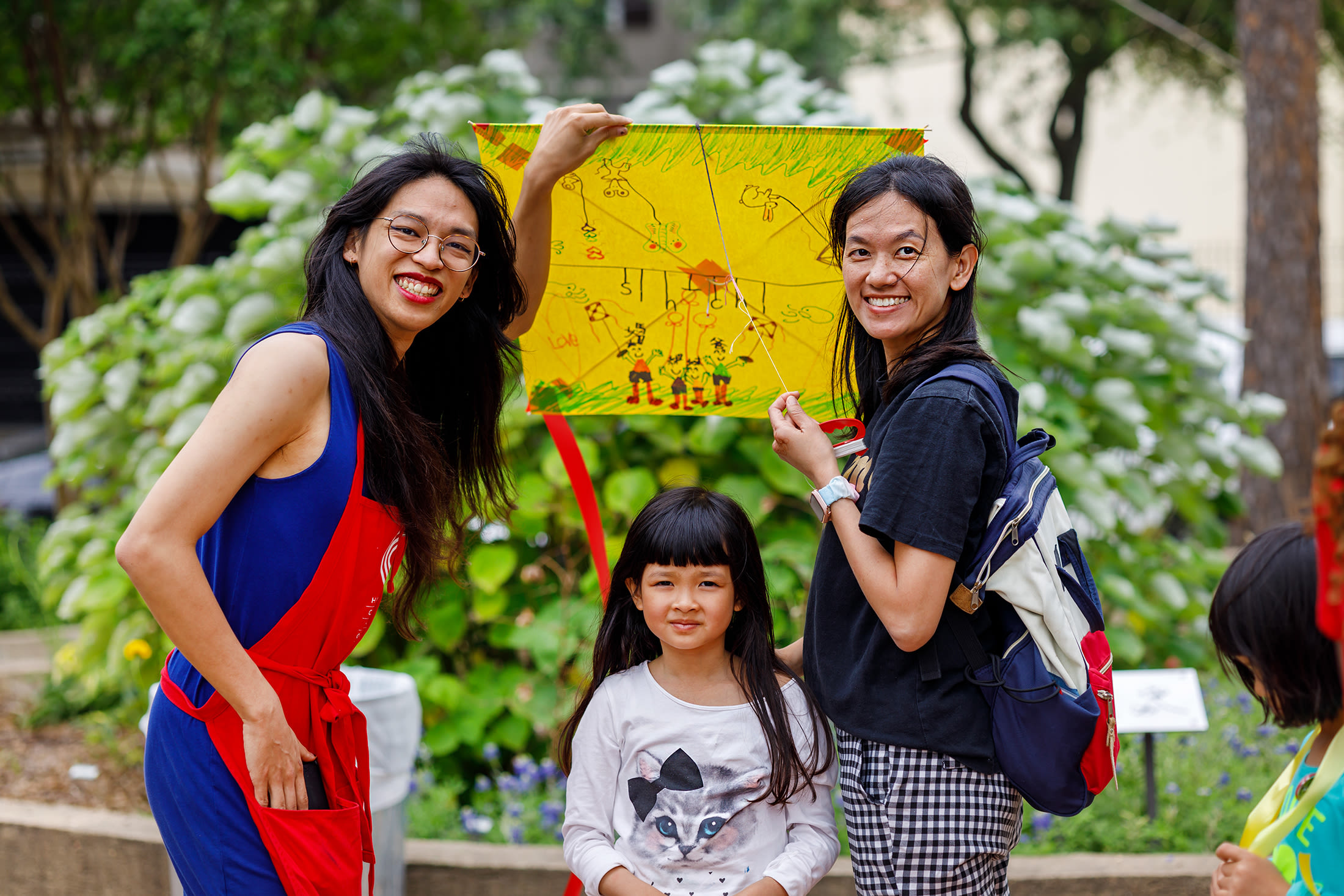Witness—and Create—Twisting and Delicate Crafts at the Edward Eberle Retrospective

Image: courtesy of HCCC
“You can present his work to a really contemporary or a really cosmopolitan audience like you have in Houston,” says Sarah Darro, a curatorial fellow at the Houston Center for Contemporary Craft, which is presenting a retrospective of works by artist Edward Eberle through Sept. 2. “I think anybody could come to his work and recognize something. He is referencing so many ideas on one surface.”
The exhibit, showcasing the Pittsburgh-based, 73-year-old’s works of intricate porcelain vessels and abstract paintings, provides Houston audiences with their first glimpse of an artist that critic Anthony Stellaccio has praised “for pushing porcelain to its limits” by “creating large forms of incredible thinness.”

Image: courtesy of HCCC
The delicate works encompass beautiful and whimsical swipes describing people, animals and geometric shapes, but it’s for his pottery that Eberle is mainly known. His works range from small, palm-sized vessels to four-foot-tall urns. “Having the amount of control over porcelain that he does is impeccable," Darro says. The more you work with a large vessel on a wheel, she adds, “the more unpredictable it becomes.”
Eberle’s aesthetic borrows from past art periods, which he fuses with contemporary elements. “There is one piece where he is doing his own rendition of Picasso’s guitar player," Darro says. "In his later pieces you definitely see some Pollock and more abstract artists coming into play.”
Although Eberle’s works may be found in museums across the globe, the reclusive artist remains largely unknown outside the art world. “My work is more stream of consciousness and I don’t have a specific story to tell,” he says in a short YouTube video, one of the few pieces of evidence of a media presence. After a process termed “spoiling the piece,” says Eberle, “the figures start to develop and what those figures are doing starts to develop also.”
Although Eberle’s works are decisively contemporary, the whimsical scenes and characters allude to various cultures and mythologies. The complex, delicately figural scenes etched onto terra sigillata (a clay slip used by the ancient Greeks and Romans instead of glaze) are reminiscent of the Japanese Kutani and Oribe art periods. The geometric patterns and surreal creatures depicted in Southwestern New Mexican Mimbre bowls, meanwhile, can also be found in Eberle’s celestial, gray scale ceramics.
Still, as Darro puts it, “even though he is borrowing icons and imagery from other pieces and mythology, I think he has developed a pretty unique aesthetic. You would be able to pick out his pieces. As an arts educator himself, he is really using the art historical canon and borrowing imagery and content and forms and then breaking them apart and using it as his own.”

The retrospective features an interactive station where visitors may practice Eberle's technique.
Image: courtesy of HCCC
Fittingly, the exhibition includes a long table where visitors can create Eberle-style vessels from paper. “All of the worksheets are designed by him,” says Darro, “which is really interesting, because he uses paper as a way to experiment with 3-D form and vessel-building before he works in porcelain.” Following Eberle’s lead, HCCC hopes to educate the public as well through other hands-on activities and engagement with more artists.
As for Eberle’s own works, they are arranged at the HCCC in order of their creation, which provides further evidence of the artist’s evolution over time. “You see things that have been cracked or, for instance, five vessels slipped and scored together," Darro says. "Eberle is really expanding the boundaries of functional ceramics and is incorporating abstract impressionism and a freer hand into his compositions later on in his career.”
Edward Eberle Retrospective. Thru Sept. 2. Free. Houston Center for Contemporary Craft, 4848 Main St. 713-529-4848. More info at crafthouston.org.




